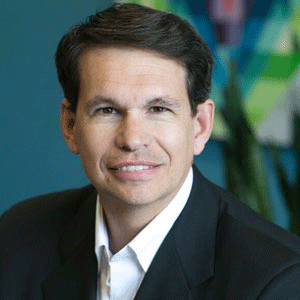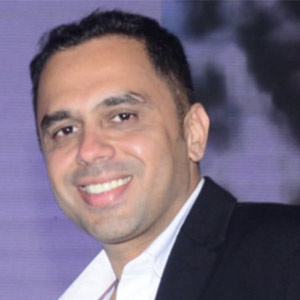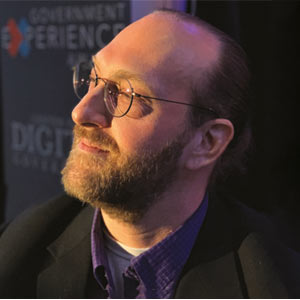THANK YOU FOR SUBSCRIBING

Tony Cordeiro, CIO, White Case
For many years, people have asked me, “What is the next big technology which will change the practice of law?” I usually mention a few of the latest apps we’ve discovered, mobility trends, the impact of security, new product features vendors have been working on to improve their products, and how we think these will drive the way people work – typically with productivity and efficiency in mind. There have been few revolutionary legal IT developments in recent history. However, it is the confluence of these many enhancements and improvements which have made a positive impact - especially in the mobility and remote working world. Most firms work hard to identify these possible solutions, link them to the business issue they seek to improve, and make our lawyers aware of how they can take advantage of them. The intuitive use of these technologies must aid the lawyer and business services professionals in working smarter and more effectively, otherwise they simply will not use them.
"Ideally, a firm should employ individuals with these special kinds of analytical skills in their practices and business services groups and have them explicitly focus on the fundamental processes and tasks of those groups"
But what is the secret sauce? What is the technology that really propels a firm forward? Are there tools which no firm can do without? Should they adopt new enterprise and desktop systems before their peers? Will that make them stand out with a competitive advantage and impact client service? Or is there another approach? These are all very good questions and ones we ask ourselves regularly. However, one of the fundamental things we should be spending more quality time on is asking ‘how’ lawyers and business services personnel do what they do. What is the process they follow to get the job done and what enabling technologies do they rely on to execute that process? Even in the most diverse disciplines, practices, or service areas there are some similarities in the way things are done.
My point is this: While ‘IT’ does matter – business processes matter equally. As suggested, studying and understanding ’what’ a process is and ‘how’ it is performed gives us the best chance of enhancing it and making
We have embarked on a mission to connect the simple business processes and steps one takes to get something accomplished with the tools that will readily help them. While there are differences which make development of a single uniform process unattainable (as many lawyers will confirm for you) there are common themes – even across different practice areas. A simple example: the most fundamental business process a lawyer performs with a client is communication via email. How that is executed is consistent: read, reply, send and file. The multitude of different desktop and mobile devices will offer different modes on how best to do this based on the lawyer’s work style and preference. Some are ‘filers’ and like to put things in the right folders in their mailbox or document filing systems, and others are ‘pilers’ and do not. Understanding these simple work style variations allows us to identify ways to inform, instruct and help each individual maximize their effectiveness with their work style.
I don’t expect the masses to go running down the path of uniformity, nor do I expect new, revolutionary IT to fundamentally change the way law is practiced or how law firms are run. However, what I have seen and expect to see more of is a change in our collective commitment to analyze how business processes are executed (business process analysis) and for partners, senior lawyers and business services leaders to communicate how they’d like to see important changes to these processes in the future. Once existing processes are reviewed, documented and flowcharted, then a future process may be outlined. This yields requirements and specifications – both functional and technical –which are used as the evaluation criteria for any potential new technology. Once we focus on improving these fundamental processes of what we do each day, we can focus on identifying enhanced solutions for everyone and better leverage the technology we have.
I’ll make one other point which is directly related to client service and revenue generating activity. Business processes are a collection of linked tasks which ultimately contribute in the delivery of a service or product to a client. Therefore, business process improvement will ultimately yield client service improvement.
A business process is the ‘work we do’ and involves the ‘the flow of data’, so in understanding the ’how’ we must also understand the ‘data flow’. It follows then, that the enhancement of a process at a transactional level lies both in understanding of these two elements; the ‘how’ and the ‘data flow’. Not only does a firm need solid business analytics, but also a Common Data Architecture – a definition of how a piece of data is used across the enterprise by processes, systems and people. This innovative yet fundamental understanding of data enables inconsistencies to be eliminated, better reporting and analytics, enhanced understand how tasks are performed and more transparency in the execution of a task – all of which contribute to enhancing a process and improving it.
Ideally, a firm should employ individuals with these special kinds of analytical skills in their practices and business services groups and have them explicitly focus on the fundamental processes and tasks of those groups. Once the low hanging fruit has been tackled – more complex systems of processes may then be addressed one the simpler processes have been enhanced. Understanding the process improvements and data flows and the underlying technologies which support them will be where firms yield better results, better decision making, enhanced work product and ultimately satisfied and delighted clients.
Weekly Brief
I agree We use cookies on this website to enhance your user experience. By clicking any link on this page you are giving your consent for us to set cookies. More info
Read Also
Artificial Intelligence - Myths And Truths
Sustainable Future through Innovative Technology Solutions
The Future Relies on Augmented AI
Digitalization with the use of digital technologies/Improving business through digital technologies
How Marco's Pizza Leaned On Technology To Succeed Amid The Pandemic By Quickly Pivoting To Contact-Free Delivery And Curbside Carryout
Bunnings Diy Digital Transformation
For a Smarter City: Trust the Data, Ignore the Hype
Smart Community Innovation for the Post Pandemic


















